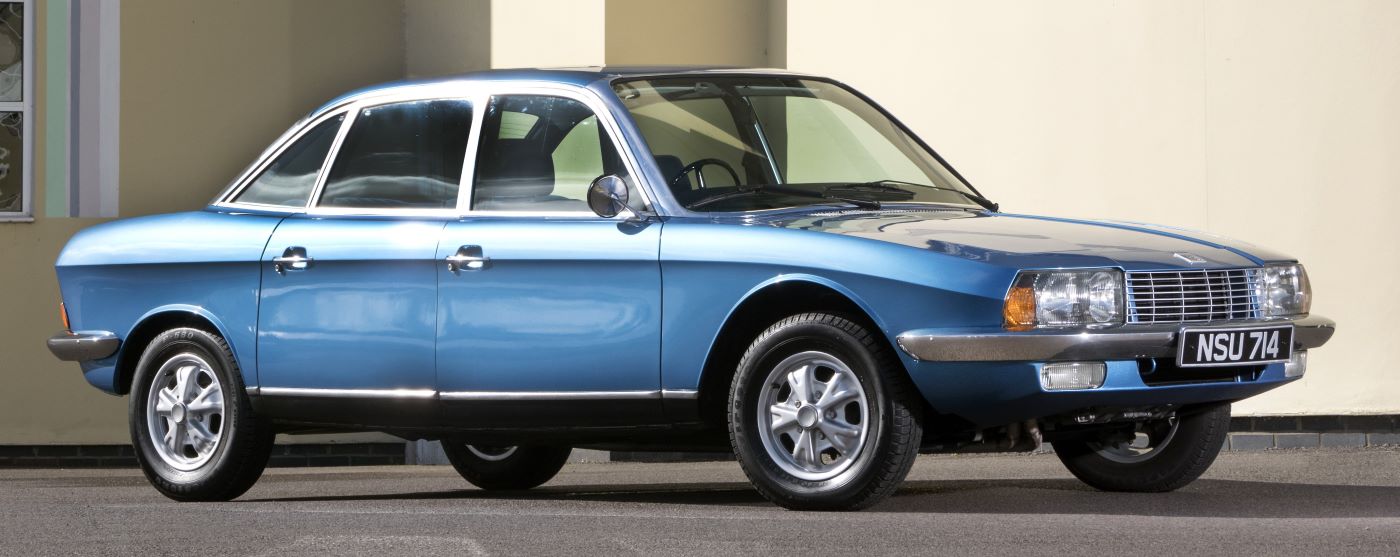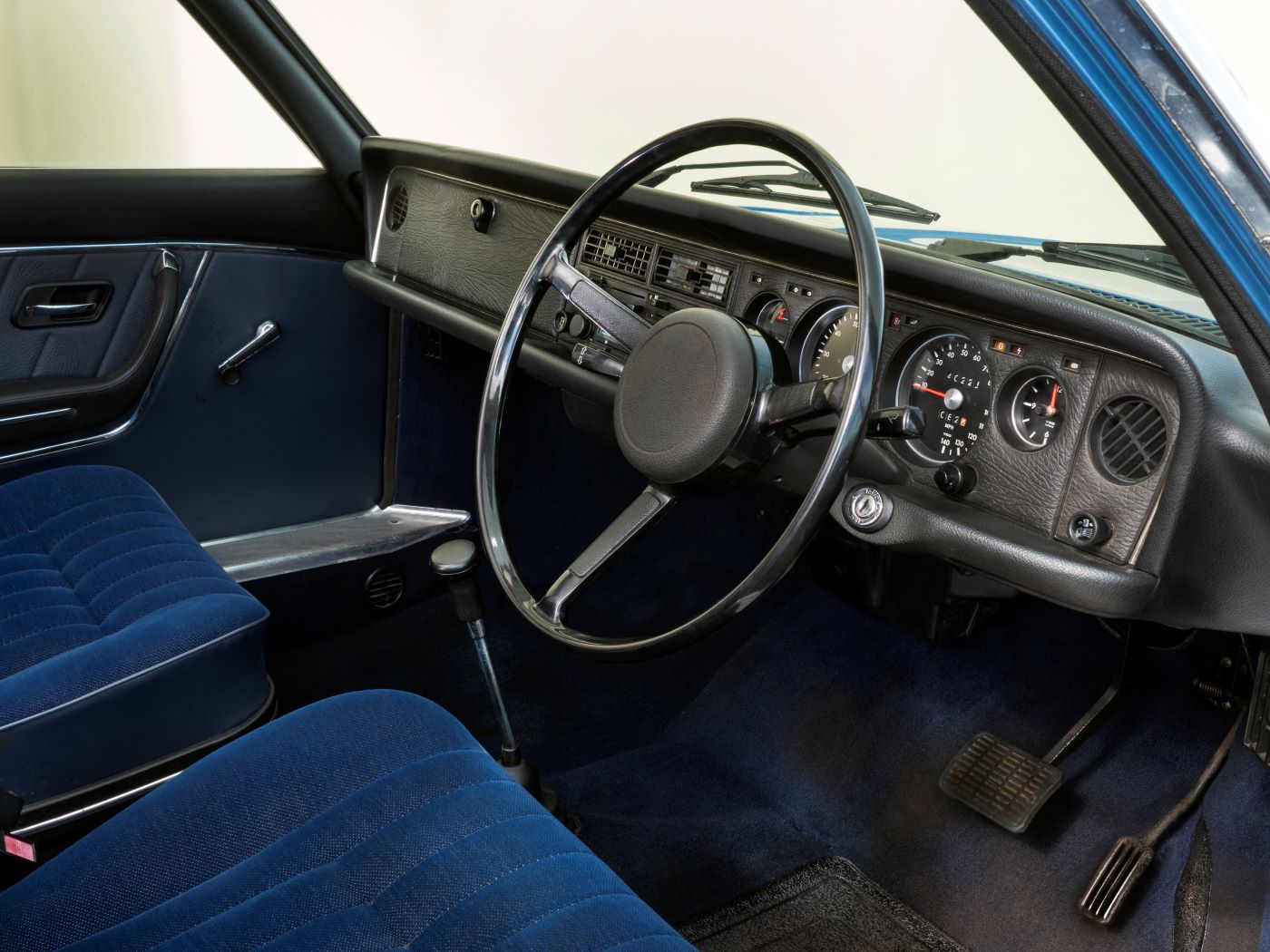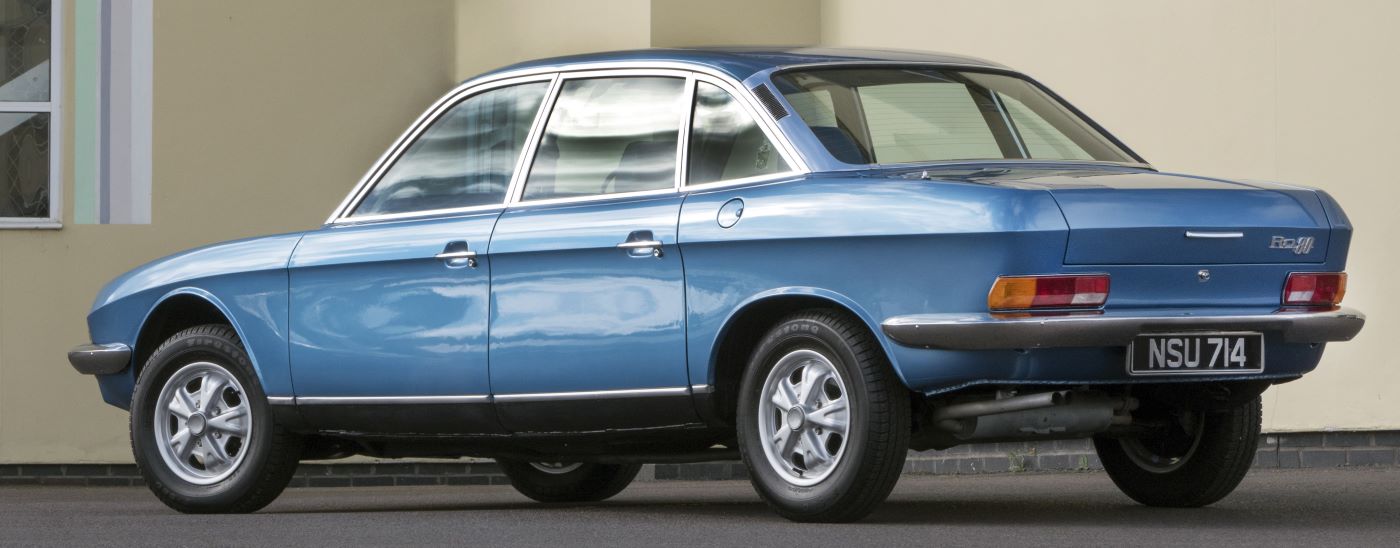
The NSU Ro 80 is a landmark executive sedan produced in West Germany from 1967 to 1977 by NSU (later Audi NSU Auto Union). With Cutting‑edge engineering, from the Engine: 995 cc twin‑rotor Wankel producing ~113 hp, the 3‑speed manual transmission with a vacuum‑operated automatic clutch—no pedal needed, and the MacPherson front/independent rear suspension, ZF rack‑and‑pinion steering & four‑wheel disc brakes.
Technical information
- Cylinders – Twin rotor (Wankel)
- Displacement – 995cc
- Power – 116PS @ 5500rpm
- Torque – 156Nm @ 4500rpm
- Max speed 107mph
- 0-62mph in 14.2 secs
- Transmission – three-speed semi-auto
- front-wheel drive
- Weight – 1213kg
One of the formative Audi brands, NSU launched the world’s first series production car powered by a rotary engine in 1964. Unlike more conventional alternatives, the ingenious unit had no need for camshafts, pistons, conrods or valves, and was therefore far smaller, lighter and smoother than its contemporaries, but the Spider convertible it powered nevertheless enjoyed only modest success. The same can’t be said for the dashing Ro 80 saloon, which arrived in 1967 featuring a twin-rotor evolution of the engine.
Admired for its adventurous (and impressively aerodynamic), wedge-shaped design and beautiful detailing as much as for its engineering innovation, the Ro 80 notably became the first German model to be crowned ‘Car of the Year’ by an international jury in the year of its launch.
Designed in conjunction with Dr Felix Wankel, the trailblazing 116PS rotary engine combined uncommon refinement and peppy, rev-happy performance delivered via a three-speed semi-automatic transmission. Unusually, the transmission’s gear lever incorporated a microswitch which operated an electrically-actuated clutch, meaning that although the Ro80 had no clutch pedal it was still necessary for the driver to slot the lever into a desired gear manually.
The Ro 80 was also ahead of its time dynamically, its sophisticated MacPherson strut front and semi-trailing arm rear suspension setting a template that is still used today, and earning the saloon a reputation as a keen driver’s car. Disc brakes at each corner – an advance that was pretty rare at the time – and standard power steering helped to maximize agility and control and reinforce that appeal.


Specifications
| Feature | Specification |
|---|---|
| Engine | Twin-rotor Wankel, 995 cc, ~113 hp |
| Transmission | 3-speed manual + vacuum clutch, FWD |
| Suspension & Brakes | Independent 4-wheel, disc brakes |
| Aerodynamics | Cd ≈ 0.35–0.34 |
| Production | 37,398 units (1967–1977) |
| Awards | European Car of the Year, 1968 |

You must be logged in to post a comment.